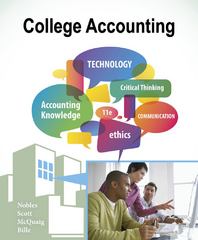Question
Section A:10 MCQ worth 1 mark each (10 marks) 1.Triple bottom line reporting has been defined as providing information about A. the financial, economic and
Section A:10 MCQ worth 1 mark each (10 marks)
1.Triple bottom line reporting has been defined as providing information about
A. the financial, economic and environmental performance and position of an entity.
B. the profitability, sustainability and human relations performance of an entity.
C. the social value, economic impact and community support provided by an entity.
D. the economic, environmental and social performance of an entity.
2.Which of the following does not represent the ethics of professional accountants?
A. Competence and confidentiality
B. Integrity and objectivity
C. Professionals kept civism and efficiency
D. Objectivity and confidentiality
3. Which of the following statements is correct?
A. Inventories under absorption costing are always higher than under variable costing.
B. Cost of goods sold under absorption costing is always higher than under variable costing.
C. The amount of fixed overhead expensed under absorption costing is always higher than under variable costing.
D. Inventories under absorption costing are always higher than under variable costing AND cost of goods sold under absorption costing is always higher than under variable costing.
4.Jane Maxwell is a financial planner at Trifle Consulting. Her estimated salary cost per billable hour is $100. The estimated overhead cost per professional labour dollar for Trifle Consulting is 20 percent and the required profit margin is 40 percent of cost. What is Jane's change out rate per billable hour?
A. $168
B. $100
C. $ 120
D. $ 148
5.The reorder point is calculated by:
A. average usage safety stock + lead time.
B. average usage safety stock lead time.
C. average usage lead time + safety stock.
D. safety stock lead time + average usage.
6. The number of products returned by customers, the number of product defects and on-time delivery are measured related to:
A. financial perspective.
B. customer perspective.
C. internal business processes.
D. learning and growth.
7.Fragrance Pty Ltd has two divisions: the Cologne Division and the Bottle Division. The
Company is decentralised and each division is evaluated as a profit centre. The Bottle
Division produces bottles that can be used by the Cologne Division. The Bottle Division's
Variable manufacturing cost per unit is $2.00 and shipping costs are $0.10 per unit. The
Bottle Division's external sales price is $3.00 per unit. No shipping costs are in curred on
Sales to the Cologne Division. The Cologne Division can purchase similar bottles in the
External market for $2.50.The Bottle Division has sufficient capacity to meet all external
Market demands in addition to meeting the demands of the Cologne Division. Using the
General rule, the minimum transfer price from the Bottle Division to the Cologne Division
wouldbe:
A. $2.00
B. $2.10
C. $2.50
D. $2.90
8. Prevention costs refer to costs incurred:
A. because defective products or services are delivered to customers.
B. in determining customer demand.
C. when defective products or services are detected before leaving the business.
D. in preventing defects.
9. If the average invested capital is $300000 and the target return on investment is 20 percent, what is the target profit?
A.$50000
B.$60000
C.$70000
D.$75000
10.Opportunity cost may also be described as:
A. a fore gone benefit.
B. a comparative cost.
C. a frontier cost.
D. an alternative cost.
Step by Step Solution
There are 3 Steps involved in it
Step: 1

Get Instant Access to Expert-Tailored Solutions
See step-by-step solutions with expert insights and AI powered tools for academic success
Step: 2

Step: 3

Ace Your Homework with AI
Get the answers you need in no time with our AI-driven, step-by-step assistance
Get Started


